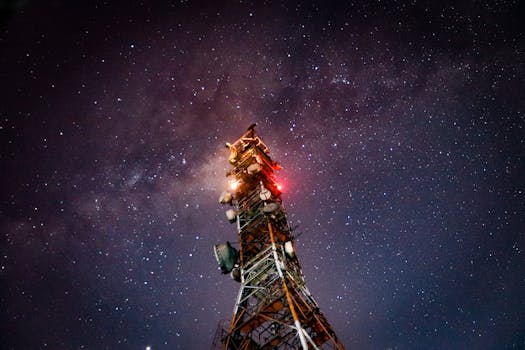
MEO Satellites: Revolutionizing Global Connectivity with Medium Earth Orbit Technology
MEO satellites, or Medium Earth Orbit satellites, are a type of satellite that operates at an altitude of around 2,000 to 36,000 kilometers above the Earth’s surface. This range is significantly lower than the Geostationary Earth Orbit (GEO) satellites, which orbit at an altitude of approximately 36,000 kilometers. The lower orbit of MEO satellites allows for faster and more reliable connections, making them an attractive option for a wide range of applications, including telecommunications, navigation, and Earth observation.
The use of MEO satellites is becoming increasingly popular due to their ability to provide high-speed and low-latency connections. This is particularly important for applications that require real-time communication, such as video conferencing, online gaming, and financial transactions. MEO satellites are also more resistant to signal interference and attenuation, which can be a major problem for GEO satellites. Additionally, MEO satellites have a wider field of view, allowing them to cover more area and provide service to a larger number of users.
How MEO Satellites Work

MEO satellites work by using a network of satellites in medium Earth orbit to provide coverage to a specific region or global area. Each satellite is equipped with a transponder, which receives and retransmits signals to and from Earth. The signals are transmitted to the satellite via an uplink, and then retransmitted back to Earth via a downlink. The satellites are also equipped with antennas and other equipment necessary for communication and navigation.
The MEO satellite constellation is designed to provide continuous coverage to a specific area, with each satellite overlapping the coverage area of adjacent satellites. This ensures that there are no gaps in coverage, and that users can maintain a constant connection as they move from one area to another. The constellation is also designed to be highly resilient, with multiple satellites providing redundant coverage in case one satellite fails or is taken out of service.
Applications of MEO Satellites

MEO satellites have a wide range of applications, including telecommunications, navigation, and Earth observation. In the telecommunications sector, MEO satellites are used to provide broadband internet access, mobile communications, and other data services. They are particularly useful for providing connectivity to remote or underserved areas, where traditional terrestrial infrastructure may not be available.
In the navigation sector, MEO satellites are used to provide location information and timing signals, which are essential for a wide range of applications, including aviation, maritime, and land transportation. The use of MEO satellites for navigation is particularly important for safety-critical applications, where accurate and reliable location information is essential.
Benefits and Challenges of MEO Satellites

The use of MEO satellites offers a number of benefits, including faster and more reliable connections, lower latency, and wider coverage areas. MEO satellites are also more resistant to signal interference and attenuation, which can be a major problem for GEO satellites. Additionally, MEO satellites have a lower launch cost and a longer lifespan than GEO satellites, making them a more cost-effective option for many applications.
However, the use of MEO satellites also presents a number of challenges, including the need for a larger constellation of satellites to provide continuous coverage, and the requirement for more complex and sophisticated ground equipment. The use of MEO satellites also requires more frequent handovers between satellites, which can be a challenge for some applications. Despite these challenges, the benefits of MEO satellites make them an attractive option for a wide range of applications, and their use is expected to continue to grow in the coming years.
See more:



